In a Famed Kenyan Game Park, the Animals Are Giving Up
In Amboseli, Kenya, a wildebeest has toppled into a ditch at the edge of a dusty track, its shoe-box-shaped head twisted upward, a single gaping chomp out of its flank. Isack Marembe and Kisham Makui study the animal’s body and everything around it, doing a roadside postmortem. “A hyena,” Marembe says.
But the culprit wasn’t a hyena. The hyena just happened to pass by and take a bite from the dead wildebeest’s side. The killer was — it is — an enduring drought driven by warming ocean waters thousands of miles away.
 This story was originally published by Inside Climate News and was supported by the Pulitzer Center on Crisis Reporting.
This story was originally published by Inside Climate News and was supported by the Pulitzer Center on Crisis Reporting.
Animals in this wildlife sanctuary have chewed every blade of grass down to a beige nub. There is nothing left. Another wildebeest, and another and another, have collapsed on the ground in a row, one by one, as if their demise had been choreographed. Those that haven’t died stand there, their heavy, doleful heads about to pull them forward to their knees. These creatures, so famous for trying to survive, are giving up.
On the road leading through the park more casualties come into view, a tally rising into the dozens, then hundreds. They become recognizable by their disintegrating shapes: Wildebeests are gray-brown lumps with quote-shaped horns. Gazelles, small piles of suede. Zebras, bloated disco-era carpets.
Then elephants. Their big frames are draped with their heavy wrinkly hides, like painters’ tarps, their compassionate long-lashed eyes now just ragged black holes. (Knock on the skin of a pachyderm that’s been dead for a few months, and the knuckles meet cement.)
Thousands of animals have died here in the last year, not from thirst but from lack of pasture and green shrubs, which usually are abundant and lush during this season but haven’t been for two years running. A third year of drought is on the way. There are so many dead animals here that vets and park rangers have volunteered to drag them away, out of sight from tourists.
Opportunists and scavengers are getting fat. “The hyenas are the only ones enjoying it now,” Marembe says.
The animals aren’t the only casualties.

Makui is a rancher from a nearby county who has lost dozens of his own animals — sheep and goats, mostly — to the drought. Marembe is a wildlife guide who lives outside the park and has spent 20 years showing tourists its complexities and splendor. As the animals the two men depend on die, their livelihoods go with them. Both are Masai, members of a herding tribe. “Without animals, we are nothing,” Makui says matter-of-factly.
The men rumble through the park in a Land Cruiser, sharing their sorrow over the landscape around them. “They are in mourning,” Marembe says, pointing to a cluster of wildebeest. “They are waiting to die.”
A few moments later, they spot a zebra as it rolls abruptly onto its back, kicking its legs in the air. “It’s dying,” the men exclaim. But the zebra rolls around in the dust, then rights itself and stands up. Makui smiles, relieved. “It’s just putting on sunscreen,” he says.
Near the foot of Mount Kilimanjaro, Amboseli National Park spreads out across 151 square miles of plains and marsh, rivers and a seasonal lake.
The scene is one of the great pageants of the natural world. The giant mounded hulk of Kilimanjaro, the planet’s largest free-standing mountain, hovers above a flat expanse roamed by a children’s storybook of wild animals: gazelles, ostriches, flamingos, lions, buffalo, hippopotamuses.
The drought has turned this wildlife paradise into a wasteland. On the horizon, dust devils twirl and rise like smoke or incense. A rotting, cadaverine stench blows on the wind from every direction.
The park draws tens of thousands of tourists a year and is a major economic engine for the region. Now these tourists pop their heads through the roofs of safari trucks, or sit inside, jabbing at their phones and looking blankly out the window, wondering how the trip of a lifetime turned into a vigil.
Drivers occasionally stop their vehicles to talk to trackers or guides, hoping to get information about significant animal sightings. One stops Makui and Marembe, asking if they’ve seen an elusive giant elephant known as Greg. Another reports two lions up the road.
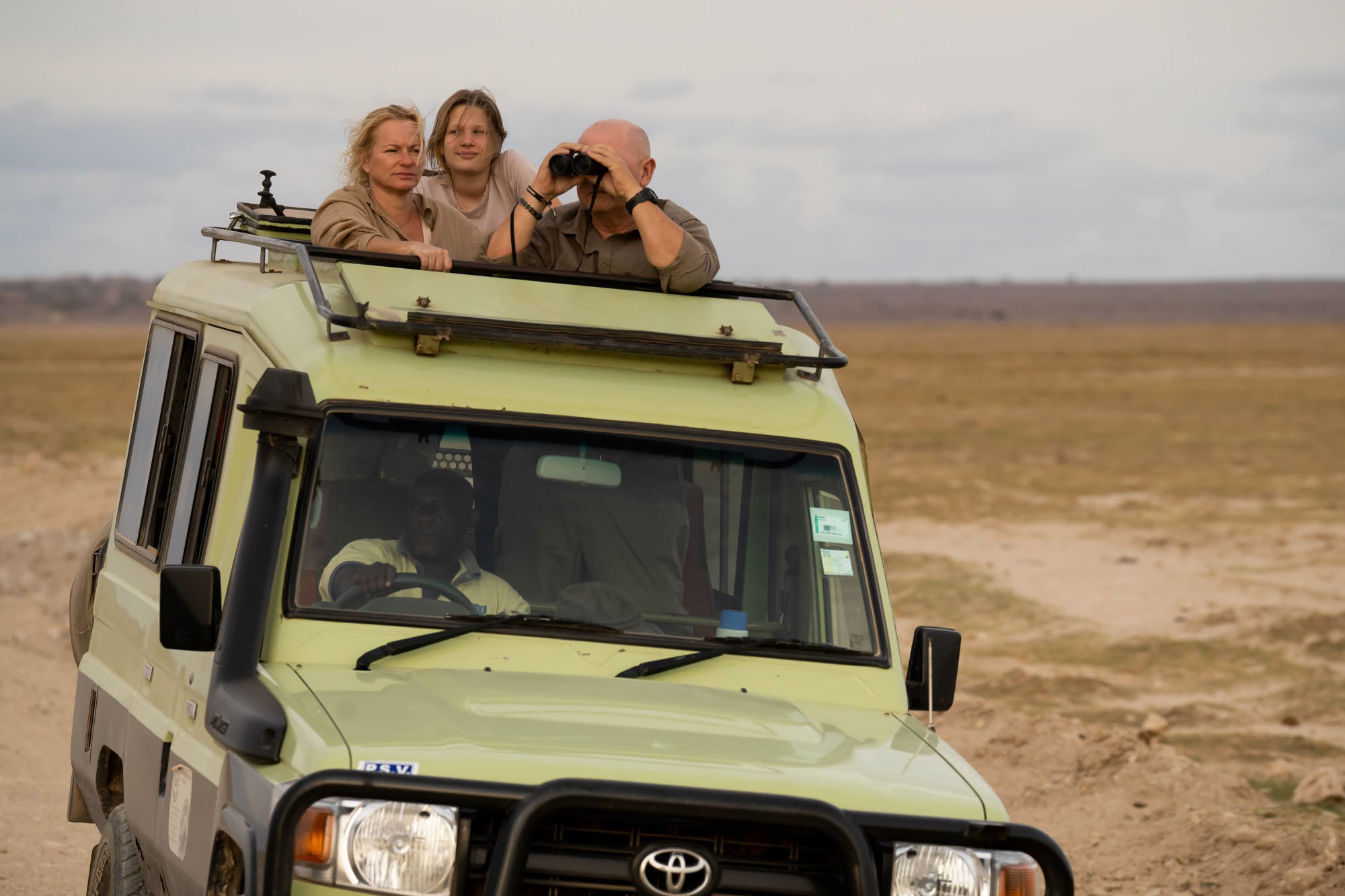
Rick Perkins and his daughter, Kathryn Faulke, are accomplished hobby photographers from Northern Virginia who came to Kenya to sharpen their skills. They left Amboseli heartbroken.
“In the morning we drove down to the park, and we saw a female elephant crush this tree down so her baby could eat the leaves,” Perkins recalled from his hotel in Nairobi. “When we came back in the afternoon, the baby elephant was dead. That was traumatic. Not just for us, but for our guides.”
What’s happening here is a consequence of a climate change-fueled drought. But this grand national park also sits at the intersection of competing interests between humans and wildlife that are being aggravated by warming temperatures and lack of rain. Here, on grim display, is a portrait of how climate change exerts pressure on creatures — wild, domesticated, and human — pushing them to clash over resources.
As more people have moved into the region, they’ve fenced off their farms and ranches, in part to protect their property, crops and animals from predators and grazers in the hope of guarding their own food supplies. But this has choked off ancient migratory routes or paths to watering holes that some animals have used for decades or more, and it has shrunk the area of pasture available to them. Amboseli has become an isolated sanctuary that can no longer offer relief when droughts grip the region.
“When animals are in a system where human impacts are becoming stronger, where there’s an increase in settlements and fenced roads, that doesn’t allow for safe crossing for wildlife,” said Joseph O. Ogutu, a senior statistician at the University of Hohenheim and an expert in wildlife population dynamics. “They’re not able to get to food or water.”


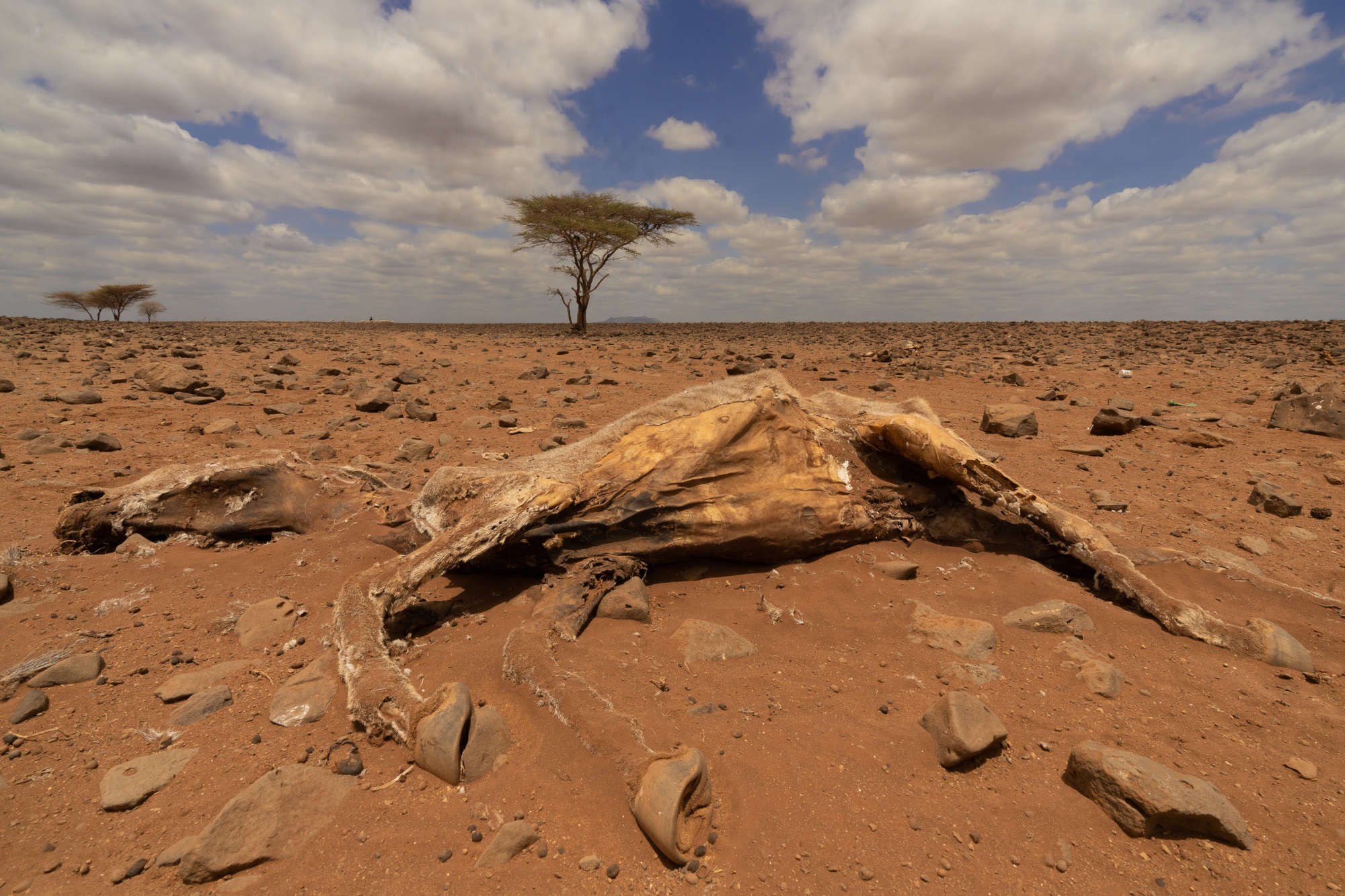

Wild animals, notably elephants in this area, break down fences and enter protected properties to eat crops and produce. When these animals encroach on private lands, property owners shoot or attempt to scare them off, sometimes with deadly consequences.
“The drought is forcing many animals to go closer to the villages where people are living, and many get killed,” Ogutu explained.
Added to this mix of shrinking resources and conflict is the recent economic downturn brought on by the Covid-19 pandemic and made worse by the drought. With emaciated livestock fetching lower prices, crops withering and jobs vanishing, illegal animal poaching has shot up across the country, putting yet another stress on the region’s animals.
“People become desperate, so they resort to killing wildlife,” Ogutu said. “The changing climate is not only affecting food security, it’s leading to more displacement and conflict. The situation is very dire.”
A tattered reflective vest hangs from a tree branch so customers can more easily spot the place where John Mwanzia Kithome sells cooking charcoal at the side of the road in the country’s northeast Garissa County, near the Somali border.
He and his friends burn wood, stoking it in a pit under the sand for a week to make the charred blocks that they put in feed bags and hawk to passersby.
This was not his work a year or two ago. Then he had a farm where he lived with his wife and three children.
“When it becomes dry in the north, they come down for water and then they chase us off the land,” he says. “They are killing us. The other day we buried nine people they shot with their guns. So many of our relatives have been killed. Our children are destitute.”
The “they” Kithome is referring to are pastoralists: herders who move through the arid landscape with their livestock, looking for pasture and living mostly off milk and meat. The “north” is Somalia.
“The pastoralists want people to move so the animals can eat,” said Kimanzi Mulonzia, who also sells charcoal here. “If the rain came today, life would get back to normal and the herders would go away and we could grow our food.”
The herders, some of whom are aligned with the militant extremist group al-Shabab, are rich, the men say. They have captured the ear of local politicians who side with them.
So the farmers retaliate. Kithome says they go after the thing that the pastoralists hold most precious and represent their greatest source of wealth: camels. Some farmers killed dozens of camels, slashing their necks and haunches with long knives, the local news recently reported.
“If you kill a human being, they don’t take much offense,” Kithome says with apparent disdain. “But if you kill a camel, they take much offense.”
Kithome and Mulonzia wonder why it hasn’t rained for so long, whether there are forces at work beyond nature.
“The rains have run away because of the war,” Kithome says. “If the Somalis kill one of us, we retaliate by killing a camel. So God is punishing all of us.”
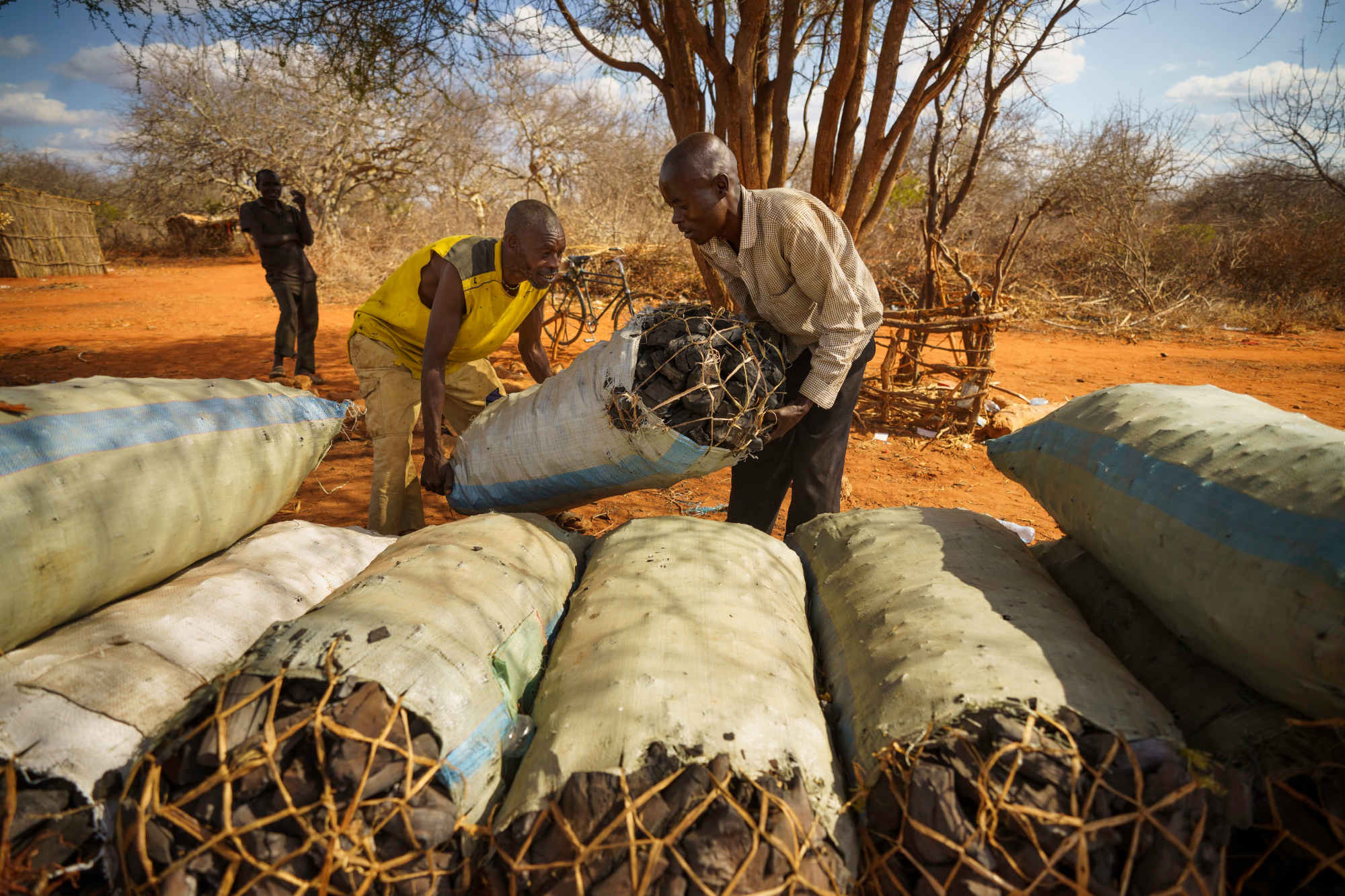

The tensions between herders and farmers have simmered here for years, but the drought is applying yet more stress to an already volatile situation. This kind of dynamic, researchers and security experts say, has already played out in major ways and will continue.
After the Arab Spring uprisings erupted across much of the Arab world in 2010 and 2011, researchers and scholars traced the tensions back to climate change-induced droughts in major breadbasket countries.
The droughts led to food shortages and social unrest across the region, ultimately reshaping the Middle East and stoking instability across Europe. “Perhaps it even contributed to Brexit,” said Tim Benton, head of the Environment and Society Programme at the U.K. think tank Chatham House.
“That was a climate-induced food-price spike,” he said of the upheaval. “It illustrates the long-running ripple effects these sorts of things can have. The current crisis has the potential to be far more disruptive.”
Hundreds of people are gathered around a watering hole at the Sheldrick Wildlife Trust’s Elephant Orphanage in Nairobi. They’re waiting, cellphones ready, for the stars to show up.
Then, in what must be the cutest spectacle on Earth, 15 baby elephants come trampling down a path toward the crowd, where wheelbarrows of jumbo-size baby bottles filled with specially made formula await them.
Men in green jumpsuits feed each of them, the calves moving their trunks out of the way as they drink sloppily from the bottles. Edwin Lusichi, the head elephant keeper, begins to announce the elephants by name and by circumstance.
“On my left is Toka,” Lusichi says, as if he’s introducing his backing band. “She was found next to her mother who had died of drought.”
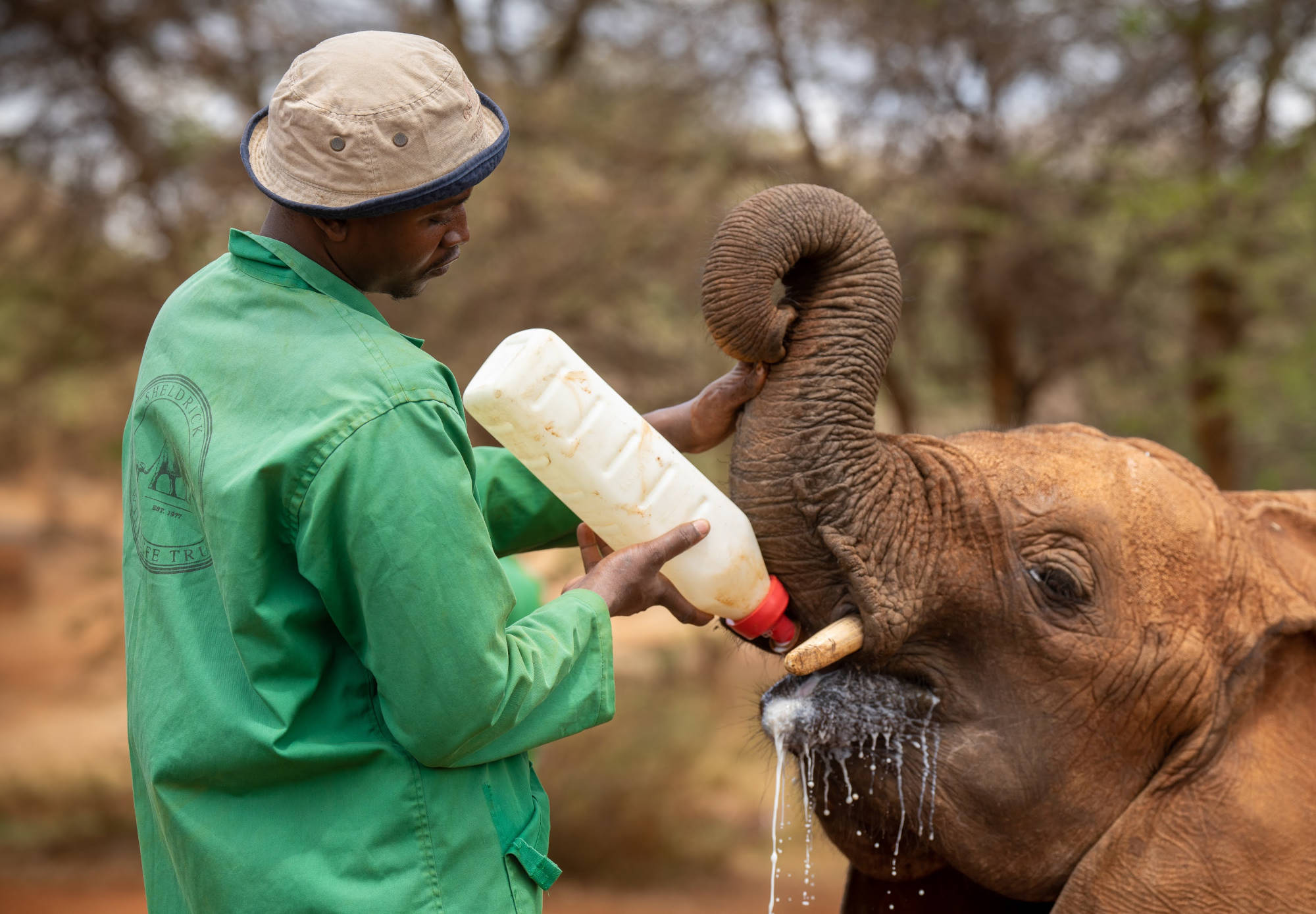
The crowd reaches out to pet the animals: their soft wrinkly skin with long, stiff hairs, the inside of their ears smooth like a luxury purse.
One baby was trapped in a snare, Lusichi says. Another was separated from its family when farmers shooed the elephants off their land. Another fell in a watering hole.
“Human-wildlife conflict is the number one reason” the elephants are orphaned, Lusichi says.
But drought is quickly catching up as the primary reason and “mother died of drought” is the most common refrain Lusichi recites today. In October alone, he says, the orphanage took in 10 babies because their mothers had died of drought-related starvation, leaving the calves with no milk or ability to forage for themselves. When matriarchs die, a herd may struggle to find the old paths to water. These maternal leaders are the ones that know the way, Lusichi says.
“They say elephants never forget,” he adds. “This is very true.”
It’s becoming difficult to disentangle one reason from the next: Did the calf fall in a watering hole because there’s so little water? Was the mother killed by a desperately poor ivory poacher? Was the young elephant separated from its family because its herd wandered onto a tomato farm for food?
“The reasons for them being orphaned are human-caused,” Lusichi says. “One way or another.”
It took 28 years to develop a formula of porridge, vitamins and minerals that sufficiently replaces their mothers’ milk. It takes aerial teams to find the stranded babies, then more people to truck them to the orphanage in Nairobi, where dozens of employees bring them back to life. They’re fed 24 liters of formula a day at three-hour intervals. When they’re ready to go back to the wild, the organization follows them for five years to ensure they’re accepted by their new families.
In its 45-year history, the Sheldrick orphanage has released nearly 300 orphaned elephants back into the wild.
Now there is less wild for them to return to.
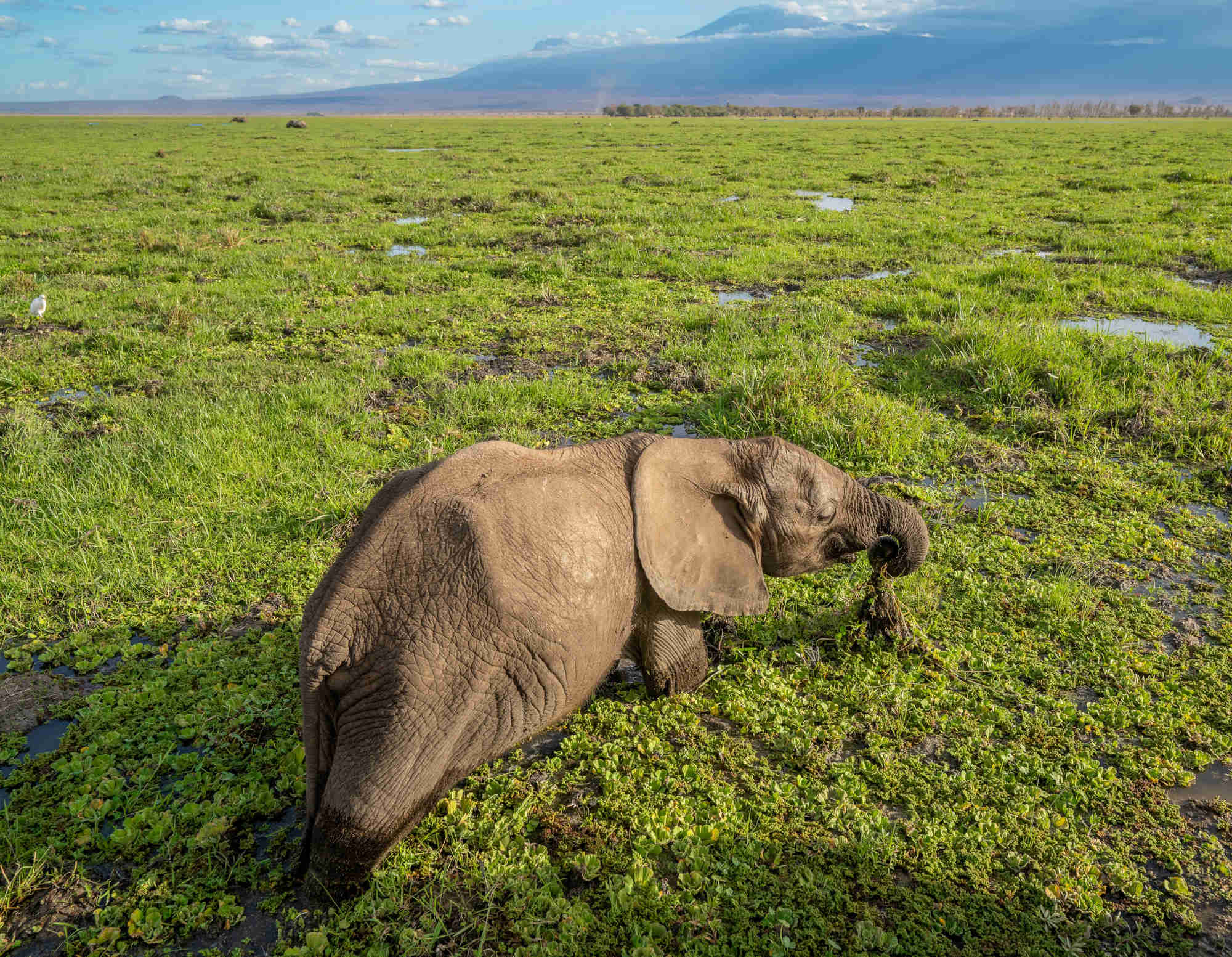
Humans may see zebras as indistinct, part of a herd. But they are individuals. Each one is unique, the pattern on its coat like a fingerprint.
Marembe and Makui continue motoring through the park. Off the left side of the Land Cruiser, they see another zebra fall to the ground.
But this time she doesn’t roll. She spasms on her side. Her legs start to paddle in the dirt. Her deep black eye is gelatinous, unfocused, catching the sun. She senses humans in her periphery and flinches, lifting her head. Then she collapses back on the ground, snorts of air from her nostrils pushing out puffs of dust. She is cantering on her side in spurts, trying to run away. She is a prey animal, after all. Her lungs push her flank up and down. She is still breathing.
Marembe and Makui continue on, past a marsh that glitters with a little water and is overwhelmed by animals of every kind that have come to eat whatever marsh grasses they can. The birds here are doing OK, Marembe says. Most of the animals are half-submerged.
Then the men decide to turn around, back onto the dry lowland, heading toward the park’s entrance. The sun is starting to set, and they need to make it to the gate before the rangers close it for the night.
They pass the zebra again, but her flank is still now. She has stopped breathing.
Georgina Gustin covers agriculture for Inside Climate News, and has reported on the intersections of farming, food systems and the environment for much of her career. Her work has appeared in The New York Times, Washington Post, and National Geographic’s The Plate, among others.
Larry C. Price is a two-time Pulitzer Prize-winning documentary photographer and multimedia journalist based in Dayton, Ohio. He previously produced award-winning photography and video footage for Undark’s Breathtaking series on air pollution, which won a George Polk Award for Environmental Reporting in 2018.
This story was produced in partnership with the Pulitzer Center and with Inside Climate News, a nonprofit, independent news organization that covers climate, energy and the environment. Sign up for the ICN newsletter here.










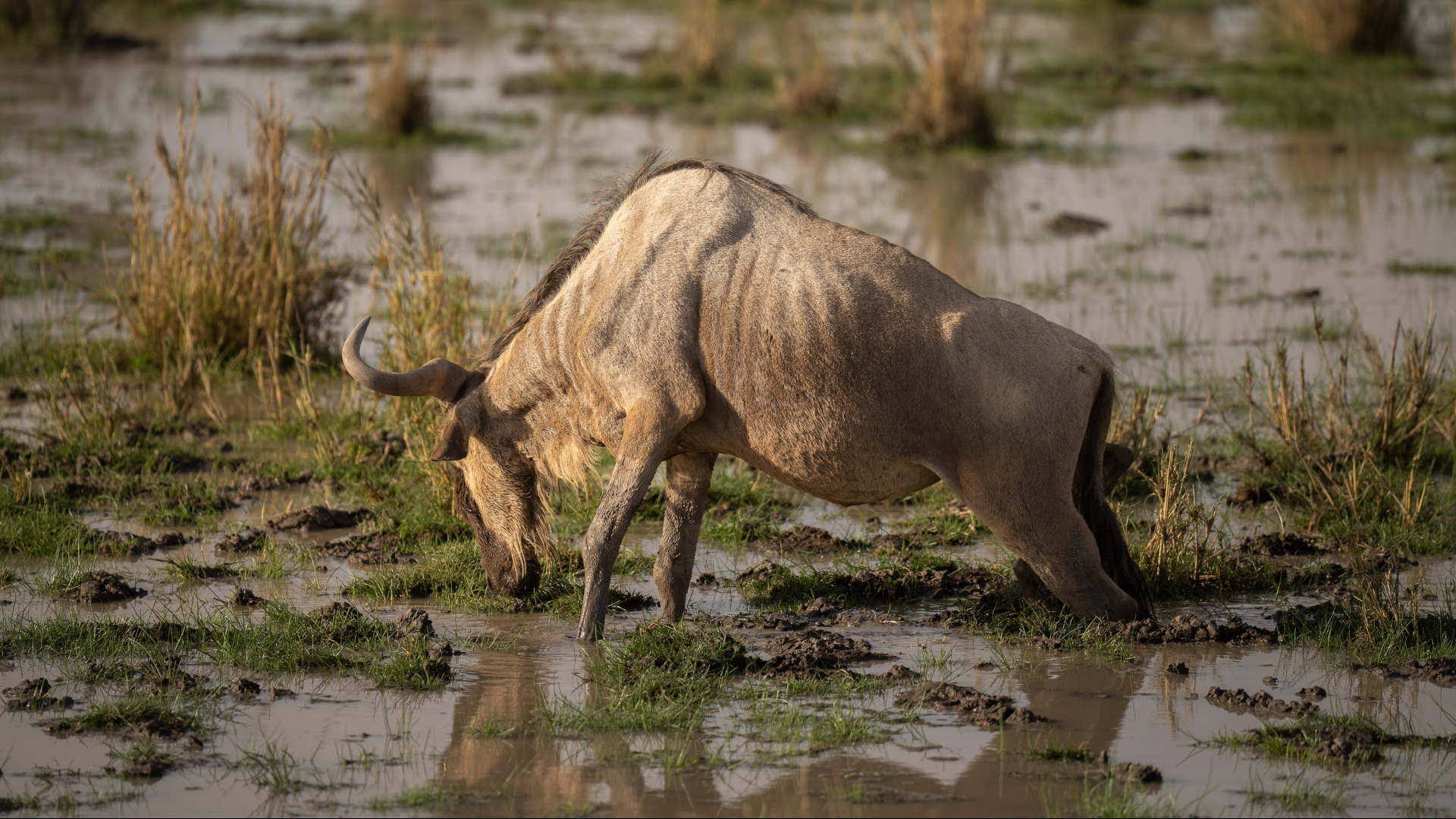
Comments are automatically closed one year after article publication. Archived comments are below.
What a sad story. I saw firsthand the devastation brought about by climate change in Africa on my trip to Amboseli in September 2022. I wrote about it in my photo blog then. It is truly incredible that just a 100 miles from this drought-stricken area there was so much rain that the annual wildebeest migration did not go north into the main Mara reserve.
A terrible toll on our planet indeed.
https://www.pradeepbansal.com/items/the-living%2C-the-dead-and-the-dying
As if there hasn’t been droughts in Africa for 500, 000 years at least that we know of. Man-made climate change is a hoax. Only the ignorant belive it!
What can be done to help these animals? The US needs to help, they send money for stupid stuff so they need to air lift food.
This is by far the saddest, most disturbing article I have ever read. I pray to God for intervention.
I’m tired of hearing about global warming the Earth cycles plain and simple and man can’t fix it God is in control of Earth there’s been other things that’s happened remember the dinosaurs got blown up the ice age you can’t control that and you’re deceiving people
HORRIBLE!! Humans owe these animals help….since humans are the reason for the destruction of the planet!! Too many of the parasitic species called human!!!! Would rather help these totally innocent animals then s human anyday!!! My heart breaks for thd animals & only the animals….
Look like barak obama need to help in this situation brings he’s from there.
Why can’t they “seed the clouds” ober there?
I have always had a love for animals and this story as all others moves me to want to make a change in helping in any way I can. Please contact me and let me know how I can be of service in helping. I am willing to even relocate. I want to make a change for the benefit of animals. Thank you.
This is sad to see. Nature has it bad enough. With evil poachers & Being eaten alive. I wish I were one of these Rich Clowns 🤡 who don’t help. God Bless the Workers there
NEVER been drought in Africa before 🙄🙄🙄 READ THE BIBLE… LOOK AT GLOBAL TEMPERATURE AVERAGES 4000 YEARS AGO
Can we get water to them?? We know how to drill for water. Drop hay also in aerial drops from planes.
I was thinking the same thing but do elephants eat hay? Could they get any nutritional value out of it? Looked it up ands they eat grasses, small plants, bushes, fruits, twigs, tree bark, flowers and roots. Doesn’t mention hay.
Sure there has….but the competition from an overpopulation of humans competing for limited resources leaves animals high & dry!!!! Rather help an animal survive then any of the 8+BILLION selfish, arrogant, egotistical, narcissistic, greedy, ignorant humans destroying EVERYTHING BY OUR PARASITIC WAYS!!!
Aren’t there any logical minds in the world anymore? If you will investigate just a little bit, you will realize that our planet goes through cycles….just like all of us and everything that surrounds us!
Yes, we go through cycles, but this one has been accelerated by humans
ABSOLUTELY!!! And we owe the animals better then what we have handed them….
But the planet has never had to deal with 8+ billion of the most dangerous, arrogant, ignorant, selfish species called human before! Shame on us!
That us because the people who are the least educated produce the most children. Citizens who are in the higher pay scales produce the fewest children!
Lindal Gusch – the “least educated”are those – particularly Caucasians, likely to be living in high-income countries – who do not understand that fertility rates drop as income levels increase. Time and time, across cultures, all over the world. Even within developing countries, regions with better income and health outcomes have lower fertility rates.
Such “least educated” also do not recognize that per capita consumption of resources (resulting in carbon emissions or destruction of forest resources) occurs at the highest end of the income spectrum.
Please do educate yourself.
If you will investigate just a little bit, you will realize that our planet is not going to support us as it once did, this includes animal life, in case you weren’t aware of that.
Everyone on here is clamoring to help, to do whatever they can, and then there’s you….
This is on all of us. Each and every citizen of planet Earth. No matter how small a change you can make, whether it’s turning off a couple lights, conserving water or just eating a bit less and maybe riding or walking somewhere instead of driving…it WILL make a difference. We’ve made this once proud, rich and fertile place a barren wasteland in just a couple generations. But the good news is if we ALL do our part to chip in, she’ll recover and be back to normal eventually. We aren’t destroying this planet: it’s already been through far worse than we could ever dish out. We’re destroying ourselves and all the beautiful and innocent creatures and habitats that have no other place to call home. And it’s way past time to get to work. Decide what you really NEED in your life instead of what you want.
So true….but good luck getting through to the majority of selfish, greedy, egotistical, narcissistic, ignorant, arrogant, dangerous humans…..far too many just don’t care! Shame on us.